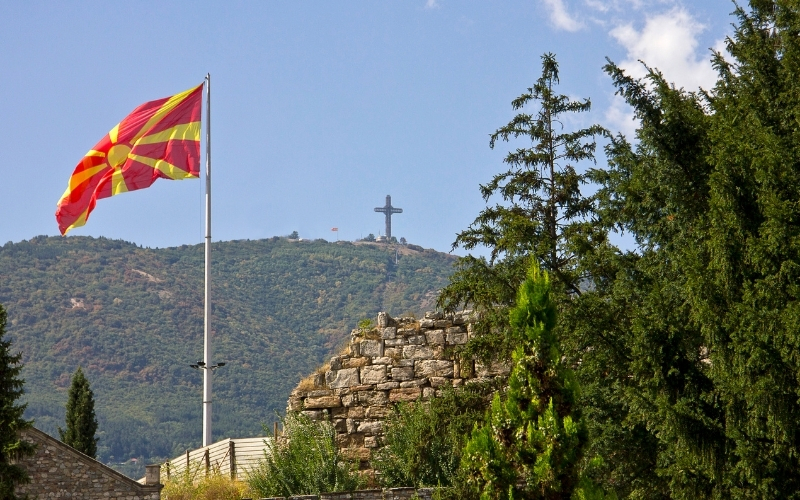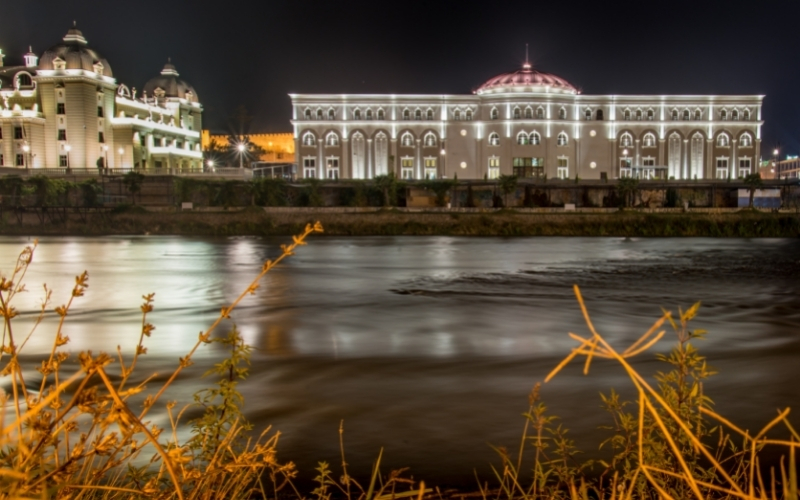Skopje weather is worth investigating, especially if you are planning to visit there for the first time.
Because nothing affects your trip in such a negative way than being surprised by bad weather during your vacation.
In this article, you will learn about the climatic conditions in the largest city of North Macedonia.
We will also tell you what the weather is like during each season and what distinguishes each month.
If you don’t know what to do in this remarkable city, look at our blog post, which shows you what to do in Skopje, or our post with an interesting travel guide.

Weather in Skopje and The Best Time To Visit?
The climate in the North Macedonian capital is mostly temperate and warm. You can safely describe the climatic conditions as continental, with the transition to the Mediterranean climate beginning here.
However, you should keep in mind that in a city of more than 300,000 inhabitants falls a particularly large amount of rain. Even in the summer, the driest period, there is a lot of precipitation.
Despite this, you will experience more rain in winter than in the warmest season. In total, there is about 570 mm of precipitation per year in the largest North Macedonian city.
The average temperature per year in this place is about 12 degrees Celsius. Thus, it is slightly warmer in the capital than in other cities of the country.
This is mainly due to the location in the basin of Skopje, which provides a backup of heat.
However, you should keep in mind that there is a huge difference in temperature between summer and winter.
While the temperatures in the summer are on average 30 degrees Celsius, in the winter, you can expect an average of 4 degrees Celsius.
If you want to know what the weather will be like in the next few days, the best place to check out the forecast is AccuWeather.
Spring in Skopje
In March, you better not expect pleasant temperatures yet. Most of this month is still rather wintry; only towards the end of March, the thermometer shows higher values.
If you want to make sure that you will not be unexpectedly surprised by rain, it is best to visit the North Macedonian capital in April.
This is the month with the least rainfall. Especially if you want to go sightseeing, such as a visit to the old bazaar of Skopje, you best come to North Macedonia at this time.
But May is also worth a visit. In this month you also enjoy a lot of sun and little rain. In addition, the temperatures in May are also pleasant and are between 20 and 25 degrees Celsius.
Summer in Skopje
During the three summer months of June, July, and August, the thermometer rises to its maximum values. Especially in August, the warmest month of the whole year, you can expect temperatures averaging over 30 degrees Celsius.
If you feel like soaking up the extra sun, then the best time to visit the largest city of the former Yugoslav Republic is in July. This month, there are named the most hours of sunshine; the average is 12.4 hours of sunshine per day.
Even though the thermometer often shows high values in the summer, you should not underestimate that even at the warmest time of year, it rains more often than in April. In August, you can expect an average of more than 20 mm of rain.
In summer, it is also worth the trip to Ohrid. This beautiful city, located directly on the lake of the same name, is one of the most beautiful towns to visit inside the country and should be a part of your personal bucket list.
The Ohrid lake is partly inside North Macedonia; the rest of it lies in Albania. If you want to travel to this part of the country, the best way is to take a bus from Skopje’s bus station.
Autumn in Skopje
Autumn is when most of the precipitation falls. Unless you have a problem getting wet, you can still visit the North Macedonian capital from September to November.
However, if possible, you should rather put your vacation in this wonderful city in September or October since you get the most rain off in November.
Especially this month, you should definitely pack an umbrella in your suitcase or backpack if you travel to the largest city in North Macedonia.
In addition, this month it begins that the temperatures are slowly moving towards winter. The average value, which indicates the thermometer in November, is about 8 degrees Celsius.
In October, on the other hand, it is still up to 18 degrees Celsius; this proves how quickly the temperature values in this North Macedonian city cool down within just one month.
However, you don’t have to worry about the rains because there are also numerous indoor activities, you can indulge in the capital of North Macedonia.
We can especially recommend you the Museum of the City of Skopje in this case.

Winter in Skopje
In winter, it gets icy in the largest city of the country, which declared its independence in 1991. At its lowest point, the thermometer drops in January, during which month you can expect temperatures to be average 4 degrees Celsius.
However, the cold should not stop you from traveling to North Macedonia. Near the country’s largest city, you will find some interesting ski resorts, so especially for passionate winter sports enthusiasts, this is the best time for a trip to the country in the Western Balkans.
Skopje is thus worth a visit at any time of the year. No matter if it is rainy autumn, hot summer, or wintertime. With the right clothes, every trip to North Macedonia will be an unforgettable experience.
